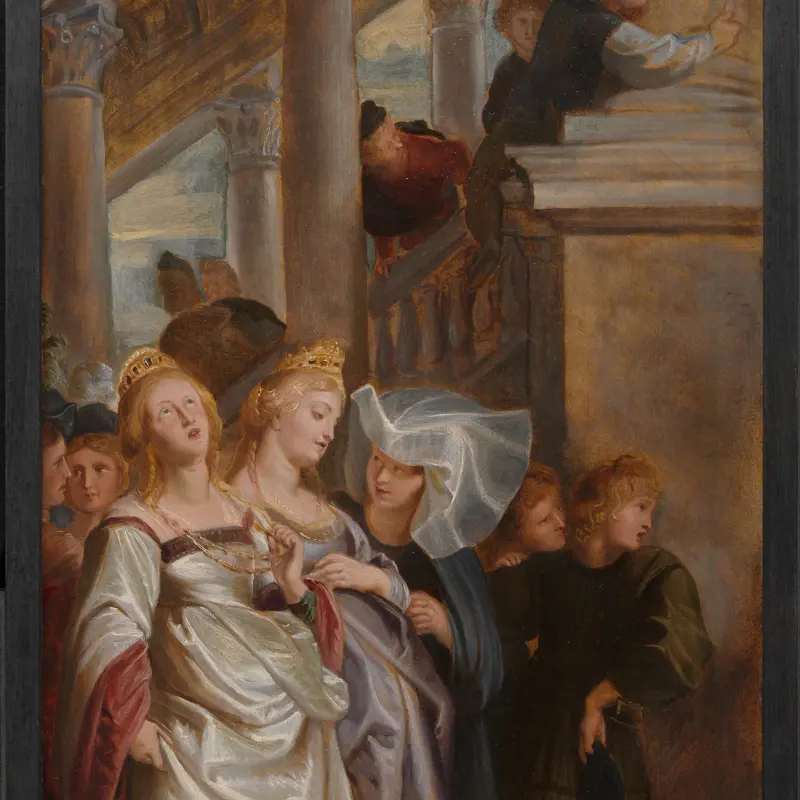Peter Paul Rubens, 'Aurora abducting Cephalus', about 1636-7
About the work
Overview
In this lively oil sketch, Rubens experiments with ideas for the design and composition of one of a series of paintings on a hunting theme commissioned by Philip IV of Spain to decorate his hunting lodge, Torre de la Parade, just outside Madrid. Rubens’s assistants would have used the sketch as a model from which they could complete the full-scale picture.
Diana, the goddess of hunting, gave the huntsman Cephalus a magic dog and spear, both shown by his side here as he reclines beneath a tree, shaded from the light. Lost in love at first sight, Aurora, the goddess of the dawn, steps down from her golden chariot and runs towards the handsome young man. Rubens has captured her eager rush towards Cephalus, who sits up, his arms outstretched, apparently eager to go with her. But in the best-known version of the story, told by the Roman poet Ovid in the Metamorphoses, Cephalus remains faithful to his wife, Procris, and Aurora leaves alone.
Key facts
Details
- Full title
- Aurora abducting Cephalus
- Artist
- Peter Paul Rubens
- Artist dates
- 1577 - 1640
- Date made
- about 1636-7
- Medium and support
- oil on wood
- Dimensions
- 30.8 × 48.5 cm
- Acquisition credit
- Salting Bequest, 1910
- Inventory number
- NG2598
- Location
- Room 18
- Collection
- Main Collection
- Previous owners
- Frame
- 17th-century French Frame
Provenance
Additional information
Text extracted from the ‘Provenance’ section of the catalogue entry in Gregory Martin, ‘National Gallery Catalogues: The Flemish School: circa 1600–circa 1900’, London 1986; for further information, see the full catalogue entry.
Bibliography
-
1986Martin, Gregory, National Gallery Catalogues: The Flemish School, circa 1600 - circa 1900, London 1986
-
2001
C. Baker and T. Henry, The National Gallery: Complete Illustrated Catalogue, London 2001
About this record
If you know more about this work or have spotted an error, please contact us. Please note that exhibition histories are listed from 2009 onwards. Bibliographies may not be complete; more comprehensive information is available in the National Gallery Library.




























